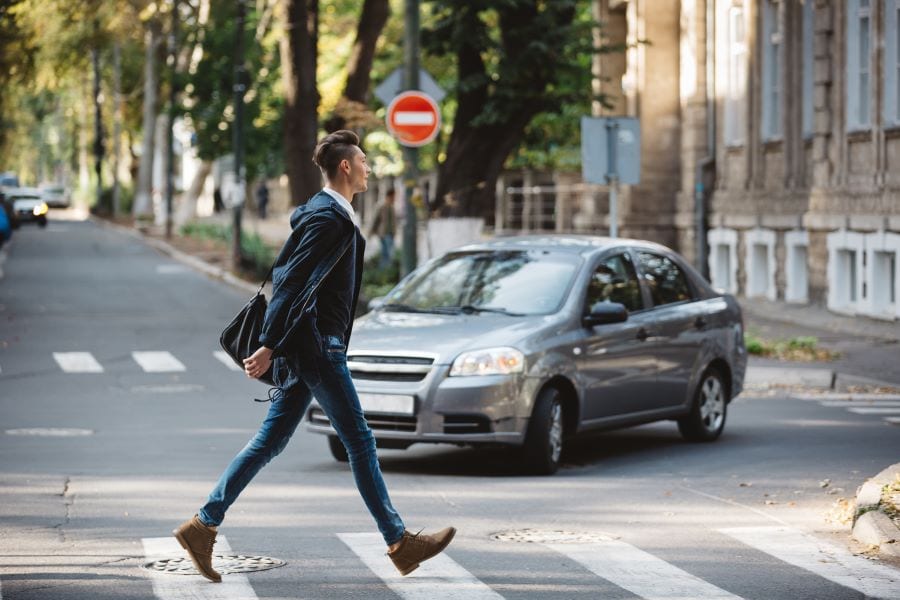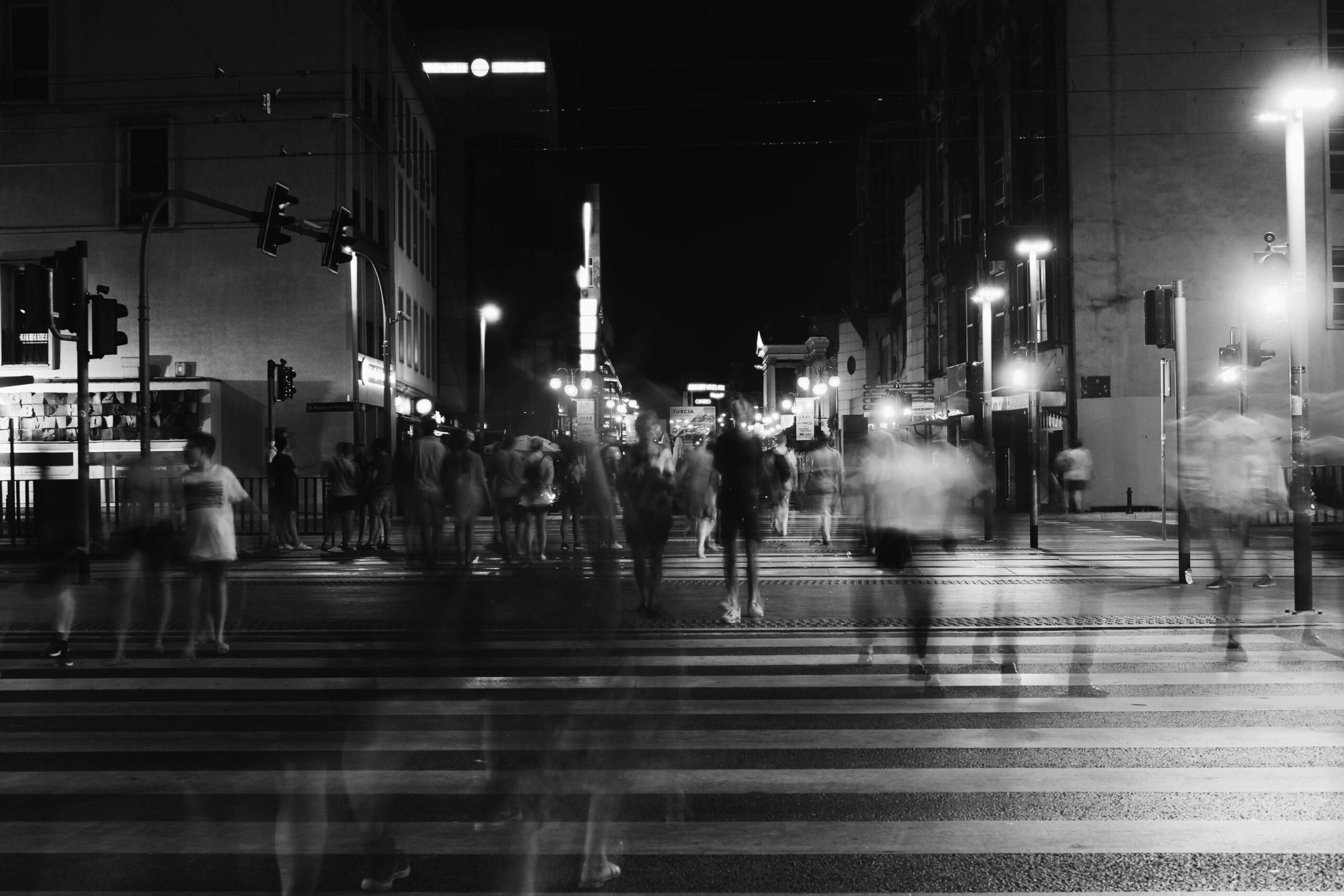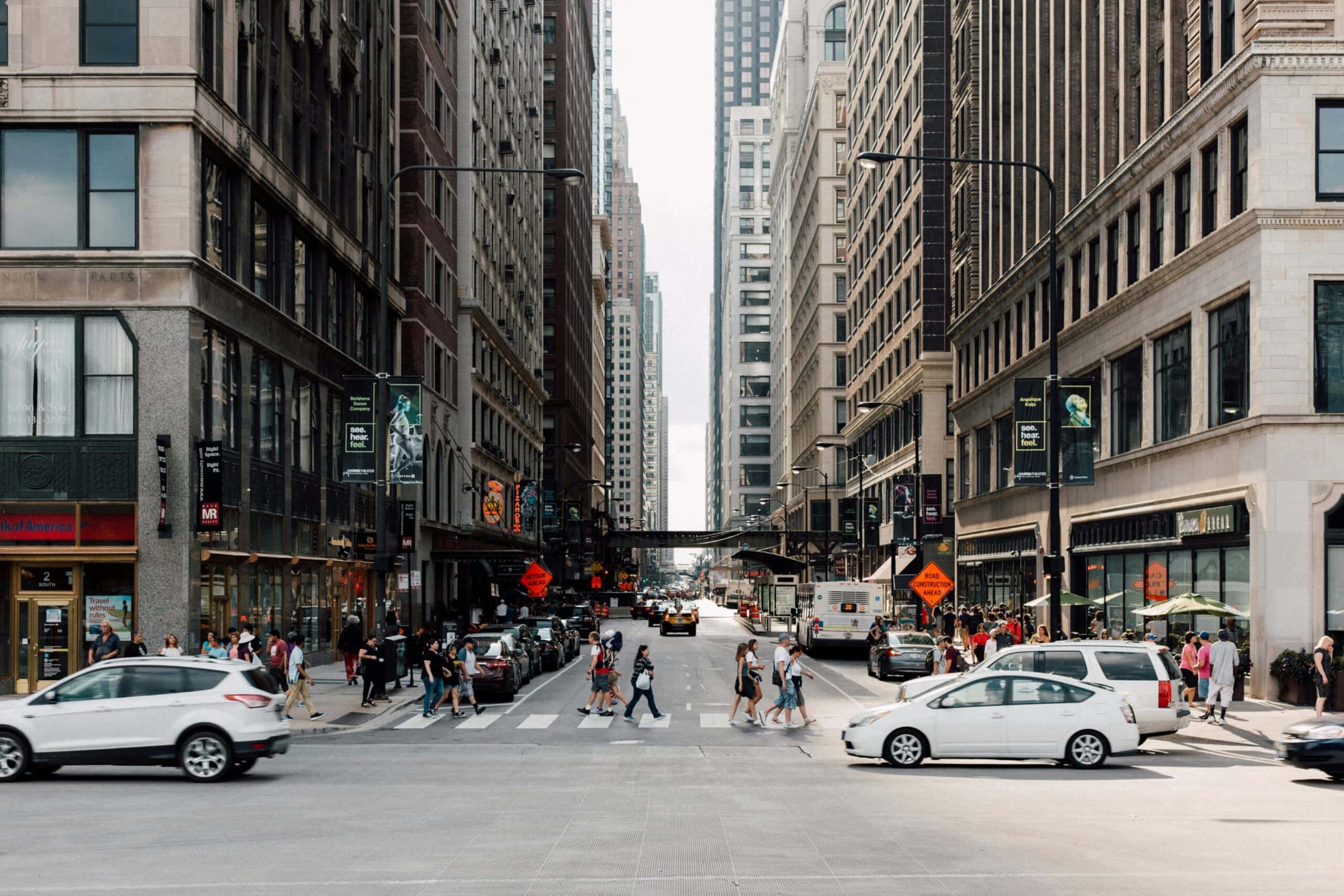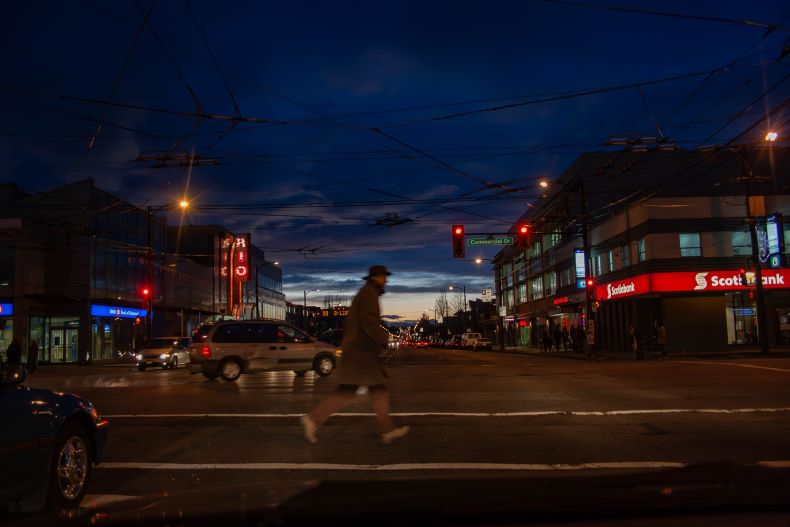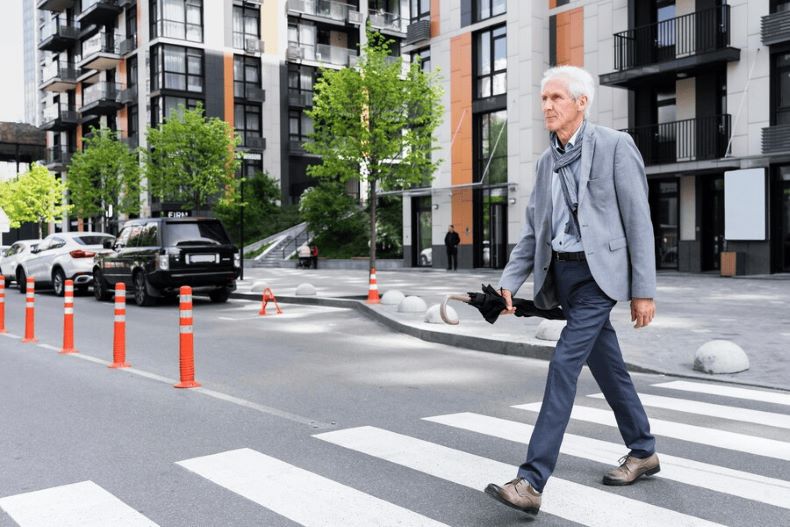
Crossing the street is something we all do without giving it a second thought. For those who traverse the asphalt outside a marked crosswalk, the term “jaywalking” may sound familiar. In downtown Las Vegas, Nevada, jaywalking isn’t just a casual term; it’s a legal concern that can lead to penalties akin to traffic tickets. If you’ve ever wondered about the rights of jaywalkers and the legal implications of crossing the road outside a designated area, you’re in the right place. Let’s decode Nevada law and explore whether jaywalkers truly have the right of way.
What is Jaywalking, and is it Illegal in Nevada?
Jaywalking, in simple terms, refers to crossing a street outside of a marked crosswalk, overhead pedestrian crossing, or designated pedestrian crossing zone. As in many other states, Nevada law prohibits jaywalking. The Nevada Revised Statute (NRS) 484B.287 explicitly prohibits jaywalking, emphasizing the importance of obeying traffic control devices and using marked crosswalks.
If you find yourself crossing the street illegally in Nevada, it’s crucial to understand the potential consequences. Jaywalking is not just a casual act—it can result in legal repercussions that go beyond a simple warning.
Understanding Right of Way: Pedestrians, Drivers, and Shared Responsibilities
The concept of “right of way” is fundamental to road safety and traffic regulations. In Nevada, pedestrians generally have the right of way in marked and unmarked crosswalks, emphasizing the importance of yielding to pedestrians at intersections.
However, the right of way is not absolute. Pedestrians must exercise caution and avoid crossing the street illegally, while drivers must be vigilant and yield to pedestrians in designated crossing areas. Shared responsibilities between pedestrians and drivers contribute to a safer road environment.
In certain circumstances, pedestrians may need to yield the right of way. For example, crossing diagonally or engaging in other unsafe crossing movements may impact a pedestrian’s right of way. Understanding these nuances is essential for both pedestrians and drivers to promote harmonious and safe road use.
Can Jaywalking Lead to Arrest?
In Nevada, jaywalking is generally not a criminal offense leading to arrest but is treated as a traffic violation. Law enforcement typically issues citations for jaywalking, resulting in fines for violators. The severity of consequences can increase if jaywalking leads to accidents or if pedestrians disregard traffic control devices.
Although jaywalking itself doesn’t usually lead to arrest, circumstances like causing accidents may prompt law enforcement to take further action. Pedestrians can avoid legal issues by following traffic signals, using designated crosswalks, and exercising caution when crossing streets, promoting a safer environment for everyone.
Could I Be Subjected to Arrest for Failure to Yield to a Pedestrian?
Failing to yield to a pedestrian is typically a traffic violation rather than a criminal offense, resulting in fines and points on your driving record. However, serious consequences may arise if it leads to reckless driving or an accident causing significant harm.
In extreme cases, criminal charges like vehicular manslaughter could be pursued. Traffic laws vary by jurisdiction, with some areas having more severe penalties, potentially leading to arrest for certain violations.
Adhering to local regulations, yielding to pedestrians, and following traffic signals are crucial for road safety. Consultation with a traffic attorney is recommended if facing citations to navigate the legal process effectively.
What Are the Penalties for a Violation of Nevada Revised Statute 484b.287?
In January 2022, NRS 484B.287 in Nevada pertained to pedestrian-related traffic violations, including jaywalking. Penalties for violating NRS 484B.287 can vary depending on the specific circumstances and the jurisdiction where the violation occurred. The penalties typically involve fines and, in some cases, community service. Here is a general overview:
Fines: The civil penalty for violating NRS 484B.287 often involves a monetary fine. The exact amount can vary by jurisdiction, and it may be subject to change. In the example provided for the City of Las Vegas, the civil penalty plus costs was $160.00. In the City of Reno, it was $115.00. These figures may have changed, and it’s essential to check the most recent local ordinances for accurate information.
Community Service: In addition to or instead of fines, some jurisdictions may require individuals who violate NRS 484B.287 to perform community service as part of the penalty.
It’s important to note that the specific penalties can be influenced by factors such as previous offenses, the severity of the violation, and whether the violation contributed to a traffic accident.
Common Defenses Against Charges of Jaywalking
When confronted with jaywalking charges, individuals can employ various defenses to contest the allegations. These defenses, contingent on case specifics, include:
Lack of Traffic Control Devices: Contending that the absence of visible traffic control devices, such as crosswalks or pedestrian signals, at the alleged jaywalking location questions the validity of the charge.
Emergency Situations: Asserting that the pedestrian had to cross due to an emergency or immediate threat to safety. Courts may be more lenient if the necessity of crossing outside designated areas is demonstrated.
Fault of Other Parties: Arguing that the actions of other parties, like reckless drivers or violations committed in the pedestrian safety zone, significantly contributed to the situation, potentially shifting some responsibility away from the pedestrian.
Inadequate Signage: Claiming insufficient or unclear signs indicating pedestrian crossing rules. Poorly maintained or invisible signage may impact the validity of the jaywalking charge.
Unmarked Crosswalks: Asserting that the alleged jaywalking occurred in an unmarked crosswalk, suggesting the location should be treated as a legal crossing area. Pedestrian rights may apply in unmarked crosswalks based on specific traffic laws.
Improper Police Procedure: Challenging the legality of police procedures leading to the citation, including questioning the conduction of stops, searches, or the issuance of citations in accordance with the law.
Constitutional Violations: Asserting that jaywalking enforcement violated constitutional rights, particularly the Fourth Amendment right against unreasonable searches and seizures.
Lack of Intent: Demonstrating that the pedestrian did not willfully or knowingly violate pedestrian traffic laws. This defense may be relevant in situations where the individual was unaware of the rules at the time.
Witness Testimonies: Presenting eyewitness accounts or evidence contradicting law enforcement’s version of events. Reliable testimony from individuals who observed the incident can be valuable in court.
Personal Injury Claims: Jaywalking, Accidents, and Legal Recourse
While jaywalking can lead to legal consequences for pedestrians, it’s also important to address the implications of accidents involving pedestrians and vehicles. In the unfortunate event of a pedestrian injured in an accident, the question of liability comes into play.
Nevada operates under a modified comparative negligence system, which means that if a pedestrian is partially at fault for an accident, their ability to recover compensation may be affected. Understanding the legal doctrine of comparative negligence is crucial for both pedestrians and drivers involved in accidents.
In cases where a pedestrian is injured while jaywalking, determining liability becomes a complex matter. Surveillance video, witness statements, and other evidence may play a crucial role in establishing fault. Seeking legal counsel from an experienced attorney is advisable for anyone involved in a pedestrian accident, whether as a pedestrian or a driver.
Financial Consequences: Jaywalking, Civil Penalties, and Medical Bills
The financial implications of jaywalking extend beyond the initial civil penalty. In the event of a pedestrian accident, medical bills and other expenses may arise. In such cases, determining financial responsibility becomes a critical aspect of the legal process.
If a pedestrian is injured while jaywalking, they may seek compensation for medical bills and other damages. However, the modified comparative negligence system in Nevada means that the pedestrian’s negligence could impact the amount of compensation they can recover.
Navigating the complexities of financial responsibility in pedestrian accidents requires the expertise of an experienced attorney. An attorney can assess the details of the case, gather evidence, and advocate for the best possible outcome for their client.
Legal Options and Seeking Counsel: Jaywalking, Accidents, and Beyond
If you find yourself facing legal issues related to jaywalking, pedestrian accidents, or traffic violations, exploring your legal options is crucial. Consulting with an experienced attorney can provide valuable insights into the specifics of your case and help you make informed decisions.
An attorney specializing in Nevada law can guide you through the legal process, from contesting a jaywalking citation to navigating a personal injury claim. Their expertise in the intricacies of traffic laws, pedestrian rights, and liability can be instrumental in achieving a favorable outcome.
Whether you’re a pedestrian seeking compensation for injuries sustained in an accident or a driver facing legal consequences for a traffic violation, an attorney can be your advocate in the legal system.

Get Help From a Practiced Pedestrian Accident Attorney at BLG
Decoding Nevada’s jaywalking laws is essential for anyone traversing the streets outside of marked crosswalks. While jaywalking is indeed against the law, understanding the nuances of Nevada Revised Statute 484B.287, the penalties involved, and potential defenses is crucial for informed decision-making.
Whether you’re a pedestrian seeking to exercise your right of way, a driver navigating shared responsibilities, or someone facing legal consequences for a traffic violation, seeking guidance from an experienced attorney is a prudent step. By understanding the legal landscape surrounding jaywalking in Nevada, individuals can contribute to a safer and more informed road environment for all.
If you’ve found yourself entangled in the complexities of Nevada’s pedestrian laws or are dealing with the aftermath of a pedestrian accident, don’t navigate the legal landscape alone. At BLG, our seasoned pedestrian accident attorneys are here to guide you through the process, ensuring your rights are protected and you receive the compensation you deserve.
Contact us now for a free consultation.
